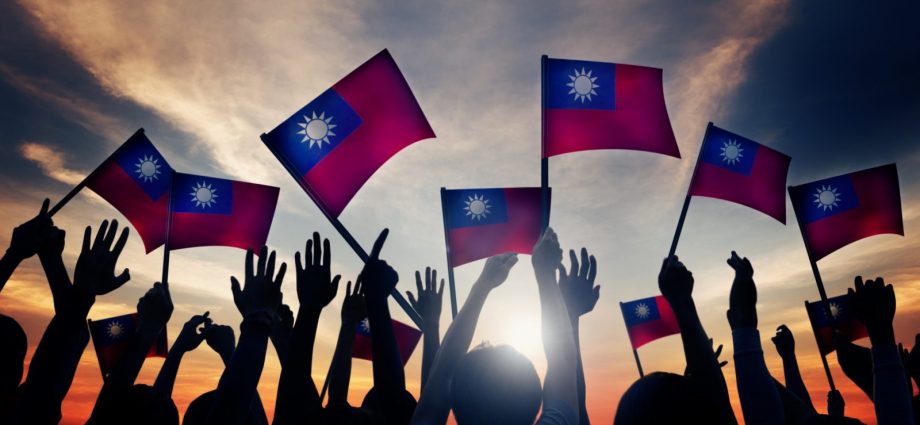The latest White Paper on Taiwan published by China’s Taiwan Affairs Office of the State Council in August 2022 exposes the intractable issue at the heart of mainland China’s troubled relationship with Taiwan — the diverging identities of people across the Strait.
Beijing views Taiwan as a renegade province, a political hangover framed within the context of the Century of Humiliation and unfinished business from the Chinese Civil War. That explains why China sees identity as the key to reunification — a way in which to restore a common community for all Chinese “compatriots.” The White Paper argues that “Taiwan belongs to all the Chinese people.”
The Paper references a process of “de-sinicization” by which Taiwan has adopted its own cultural and political norms. It charges Taiwan’s current political authorities with inciting separatism in collusion with hostile foreign forces — principally the United States — that seek to undermine “the common aspiration of those on both sides of the Taiwan Strait.”
This interpretation sees diverging cross-Strait identities as central to China’s “sovereignty, security and development interests” and in fomenting the current cross-Strait tensions.
The White Paper makes it clear that while peaceful reunification is preferred, China “will always be ready to respond with the use of force.” But China’s idea of Taiwan as part of a homogenous cross-strait community is not an accurate depiction of reality — a distinct Taiwanese identity has evolved on its own.
There is clear evidence that the Taiwanese public holds socially liberal values. A free media, critical public discourse over political decisions and trenchant support for multi-party democracy have become hallmarks of its contemporary society.
Taiwan ranks among the top 10 in the Democracy Index, scoring higher than the Netherlands, Switzerland and Australia. This democratic identity spans all age groups, incomes and political allegiances in Taiwan.

Around 5% of Taiwanese people support reunification with the mainland. That does not equate to outright support for independence but it shows there is support for a more stable version of what is frequently referred to as the status quo, even if Taiwan has its own interpretation of what the status quo actually means.
Mainland China considers any formulation of the status quo to be unacceptable, as it perpetuates the separation of the two communities under different governing authorities.
While promoting the desired endpoint of peaceful reunification, the White Paper affirms that “people on both sides of the Taiwan Strait are of the same family” and that “it is necessary to fight any force that attempts to undermine China’s sovereignty and territorial integrity or stands in the way of its reunification.”
While the White Paper does recognize Taiwan’s distinct society and pledges that the”‘two social systems will develop side by side,” the mainland offers the one country, two systems model as the proposed solution.
But the Paper places greater emphasis on “one country” under the leadership of the Chinese Communist Party than on the maintenance of “two systems.”
The Paper suggests that Taipei and the mainland should form a trust-based relationship in which Beijing would keep its word and maintain Taiwan’s current society.
While recent events in Hong Kong loom large over Taiwan’s interpretation of this proposed relationship, the White Paper explicitly argues that “[t]he practice of one country, two systems has been a resounding success.”
Mainland officials wilfully ignore the reality that Taiwan is a society in which individuals can observe recent events in Hong Kong and make up their minds as to whether the Chinese Communist Party has kept the promises it made before 1997.
This free-thinking mindset may explain why a senior mainland diplomat stated a need for re-education in Taiwan after reunification “to eliminate separatist thought and secessionist theory.”
Taiwanese authorities have been swift to condemn the “one country, two systems” model as a solution to reunification. The Mainland Affairs Council argues that China’s claimed jurisdiction is based on a “wrong interpretation of a UN General Assembly resolution” — a view broadly reflected in mainstream opinion.
Diverging cross-Strait identities pose a challenge for Chinese President Xi Jinping because the reunification of Taiwan is embedded in his national rejuvenation discourse. The White Paper makes explicit that politicians on both sides of the Strait “should not allow this problem to be passed down from one generation to the next.”

Xi’s China Dream frames reunification with “compatriots” across the Taiwan Strait as a central theme of Chinese foreign policy. Xi is seen as a leader who can deliver on this hallowed objective, but such agency comes with responsibility, feeding into a growing seam of overt mainland nationalism which adds pressure to deliver on expectations.
The White Paper shows the determination of China’s leadership in resolving cross-strait relations but also highlights the intractable nature of Beijing’s relations with Taiwan.
The mainland never fully accepted the status quo and now appears to no longer to accept its continuation on the basis that it is an unpalatable, least-worst option needed to maintain peace.
China’s “compatriots” in Taiwan have constructed their own identity and are now increasingly confident that Taiwanese society can exist without interference from Beijing.
No single policy can resolve security tensions, but a better understanding of the positions on both sides of the Taiwan Strait is at least a starting point from which to help craft a more nuanced solution.
Paul Irwin Crookes is Director of Graduate Studies at the Oxford School of Global and Area Studies, Director of Contemporary China Studies and Associate Professor of Contemporary China Studies at the University of Oxford.
This article was first published by East Asia Forum, which is based out of the Crawford School of Public Policy within the College of Asia and the Pacific at the Australian National University. It is republished under a Creative Commons license.

